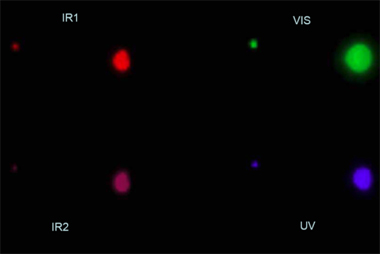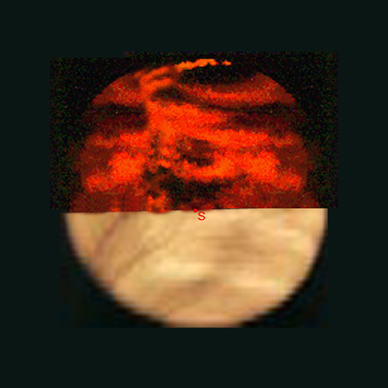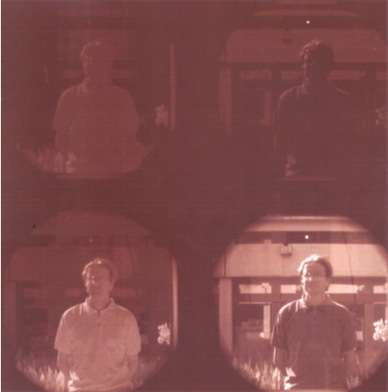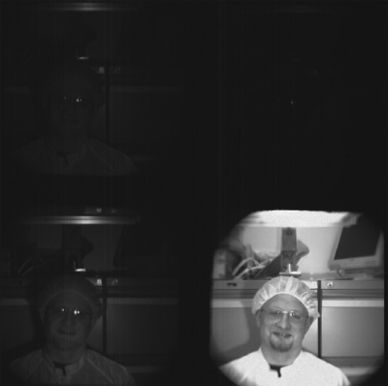![]()
First Light

First Image Expectation

Photos of the VMC Team members taken by the VMC instrument


This image, taken by the Venus Monitoring Camera (VMC) during commissioning of the Venus Express instruments, shows Earth and Moon from 3.5 million kilometres away. Four Earth-Moon pairs presented here in false colours correspond to the VMC channels sharing one CCD. The exposure time was set to obtain sufficient signal from the Moon in all four channels simultaneously. For this reason Earth is strongly overexposed. The value of such images to the scientific teams is that it allows them to test and calibrate their instruments before Venus approach. Additional observations of the stars, Venus, and stray light tests were performed by VMC during the cruise phase.
In its first observations on April 12-13 Venus Express will see the Southern hemisphere from a distance of ~200,000 km. The Venus disc will occupy ~80 pixels of VMC. The spatial resolution will be ~150 km/pixel. The image above shows the composite image of Venus expected from the first observations. Red dot in the image centre marks the South Pole. Half of the image (lower part) will be occupied by the day side. It is represented here by the Mariner-10 image with degraded spatial resolution. The upper part is occupied by the night side on which VMC will detect emissions emerging from the lower atmosphere and the surface. In this example the night side part is represented by the NIMS/Galileo false colour image. The brightness inhomogeneities correspond to variations of the surface temperature and cloud opacity. Since the signals from the day and night sides are quite different the two halves will be captured by VMC, downlinked, and possibly shown separately.
W. Markiewicz (PI)
M. Tschimmel